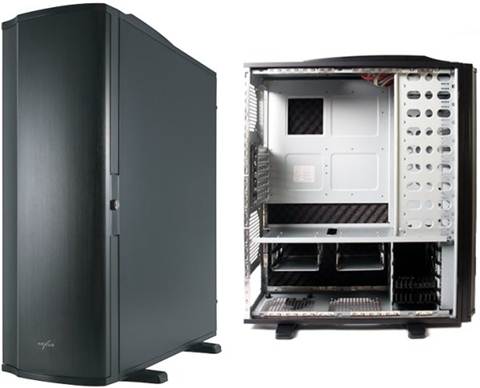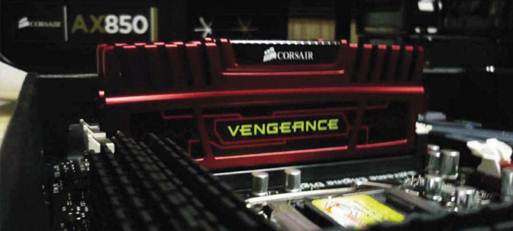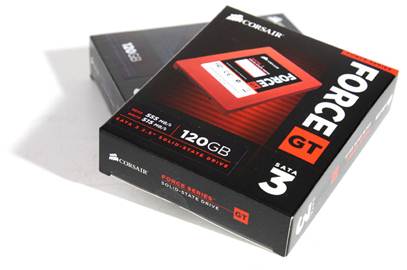Choosing your case
A good case is a essential part of any PC
build, and you don’t need to shell out a small fortune to get a high-quality
chassis with excellent cooling. The first thing on your check list is that a
case is roomy enough to hold the rest of your components. Confirm that it has a
motherboard tray of the right dimensions (ATX, micro-ATX or mini-ITX) and that
it’s deep enough to accommodate your chosen video card. Almost any case will
accommodate a mid-ranged or entry-level card, but some high-end models are the
best part of a foot long and only specially designed cases will fit them in!

All good cases have mounting points for
multiple fans. These all should be of at least 120mm in size, though several
case manufacturers now have models supporting even larger 140mm or 200mm models.
As a rule, the larger the fans, the quieter they can operate while still
shifting the same airflow. Cases from well-known manufacturers usually come
with fans of a decent quality included. These include Corsair and Antec, as
well as Cooler Master and Fractal Design. Thermaltake has a great range of
chassis if you want your gaming rig to look as aggressive as its components,
while a special mention has to go to Lian Li – arguably the manufacturer of the
most beautiful PC cases in the world. If you opt to go for a cheap and cheerful
unbranded case, double-check that you don’t need to buy fans as well, otherwise
you’ll probably end up spending just as much as you would have done for a
decent branded case with them included as standard.
When picking a case, you should also
double-check that it has enough bays to accommodate your storage solution. If
you need a system that can accommodate plenty of hard drives, double-check that
your chosen model has enough 3.5” and 5.25” bays. It’s also worth paying a
little more for a case with some form of anti-vibration technology for the hard
disk bays. There’s nothing more annoying than a badly designed case that
transmits resonance from your hard disk and amplifies it into a loud
distracting buzzing sound!
Picking the right storage

Corsair AX850
You might be tempted to reuse hard disks
from a previous build, and truth be told you probably won’t cost yourself a
great deal of performance if you choose to do this. Hard drives have not
exactly evolved at the lightning pace, and with a few exceptions like the
Western Digital Raptor, they are still variants on the same 7200rpm design
we’ve all been using for the past decade, just with ever larger capacities.
With that said, today’s high-density drives are capable of performance faster
than older models, with sustained transfer rates of over 130MB/s. If using a
mechanical drive for your OS, insist on a 7200rpm model and don’t be tricked by
‘Intellipower’ spin speeds or any other nonsense; there are just cunning ways
of hiding a lousy 5400-5900 spin speed that will cost you responsiveness and
performance.
We would argue that one of the most
noticeable and valuable investments you can make is a solid-state drive, or
SSD. These drives are capable of a sustained transfer rate of as much as 5x
that of a conventional disk, but truth be told this actually paints them in a
rather unfavourable light. When tasked with small file random reads and writes
– operations that are actually far more likely when running an OS volume – they
can be as much as 200 or 300 times faster than a hard disk. If you’re spending
more than $1,500 on your new build and have not factored in an SSD, you’re
doing yourself a disservice; you have overlooked the single most noticeable
performance-determining upgrade that money can buy.

Force GT 120GB SSD
Given the fairly minimal differences in
cost, we recommend buyers limit their searches for a new SSD only to the latest
6Gbps models. These are dominated by two internal controllers, one made by
Marvell and another by SandForce. The vast majority of the solutions on the
market, be they from Crucial, Corsair, OCZ, Patriot, Plextor or Kingston, are
based on one of these two options. When coupled to a suitable 6Gbps controller
you can achieve more than half-a-gigabyte per second in transfer rate, and
response times of less than 0.1ms. A 60GB capacity is enough for Windows and a
decent smattering of programs, and with such drives available for $120 or less,
you should certainly factor in an SSD boot disk into any moderately-specified
PC. Larger capacities are obviously more expensive, but will allow you to
access more of your data at ultra-fast speeds.